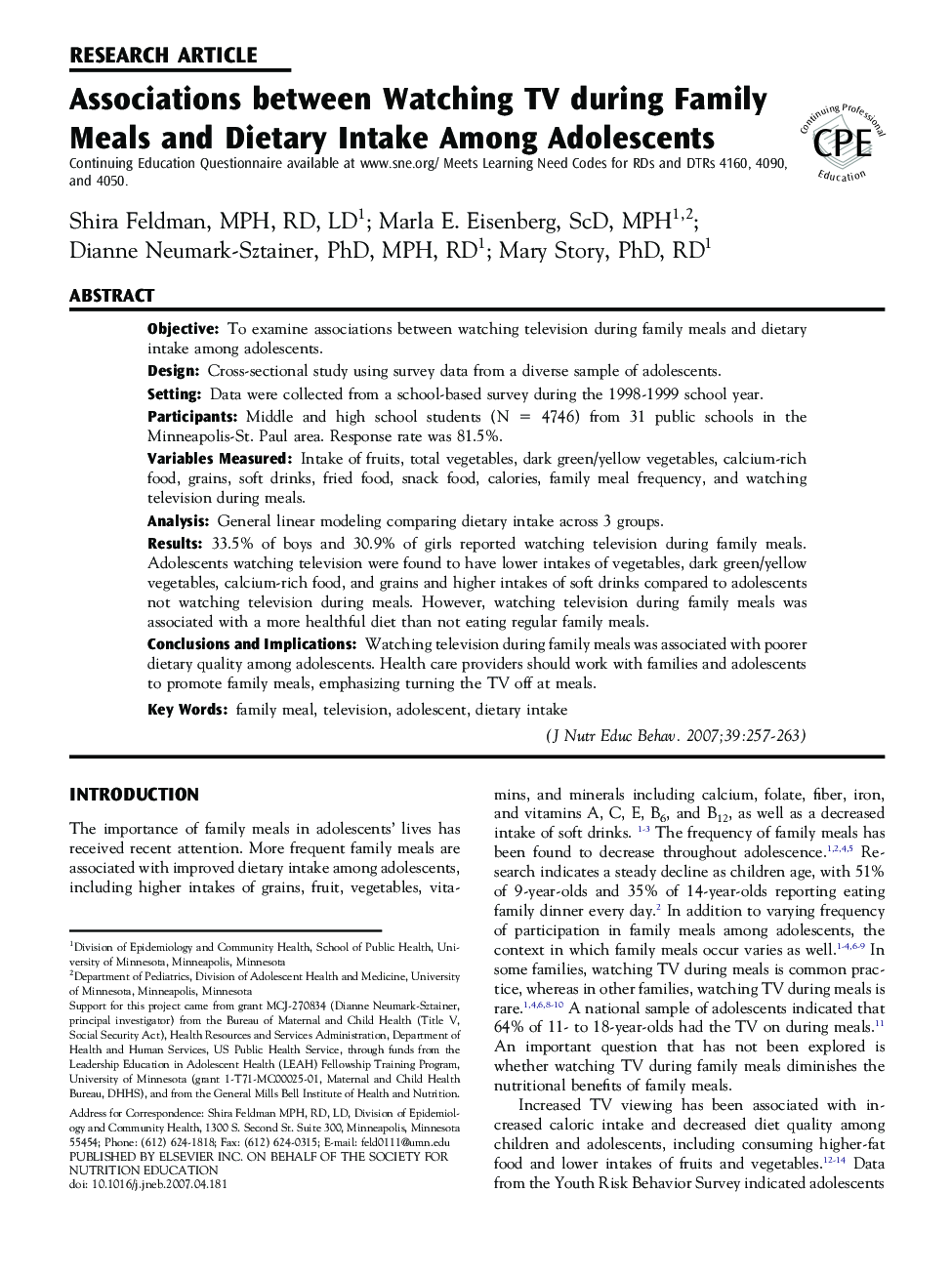| Article ID | Journal | Published Year | Pages | File Type |
|---|---|---|---|---|
| 363344 | Journal of Nutrition Education and Behavior | 2007 | 7 Pages |
ObjectiveTo examine associations between watching television during family meals and dietary intake among adolescents.DesignCross-sectional study using survey data from a diverse sample of adolescents.SettingData were collected from a school-based survey during the 1998-1999 school year.ParticipantsMiddle and high school students (N = 4746) from 31 public schools in the Minneapolis-St. Paul area. Response rate was 81.5%.Variables MeasuredIntake of fruits, total vegetables, dark green/yellow vegetables, calcium-rich food, grains, soft drinks, fried food, snack food, calories, family meal frequency, and watching television during meals.AnalysisGeneral linear modeling comparing dietary intake across 3 groups.Results33.5% of boys and 30.9% of girls reported watching television during family meals. Adolescents watching television were found to have lower intakes of vegetables, dark green/yellow vegetables, calcium-rich food, and grains and higher intakes of soft drinks compared to adolescents not watching television during meals. However, watching television during family meals was associated with a more healthful diet than not eating regular family meals.Conclusions and ImplicationsWatching television during family meals was associated with poorer dietary quality among adolescents. Health care providers should work with families and adolescents to promote family meals, emphasizing turning the TV off at meals.
